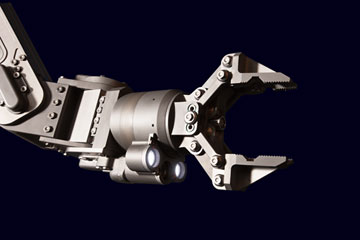
(2 of 6)
Whether you lean toward the gee whiz or the uh-oh, there is no doubt that the workplace is heading into uncharted terrain. As MIT professor Erik Brynjolfsson and principal research scientist Andrew McAfee put it in their book Race Against the Machine, "Computers (hardware, software, and networks) are only going to get more powerful and capable in the future, and have an ever-bigger impact on jobs, skills, and the economy. The root of our problems is not that we're in a Great Recession, or a Great Stagnation, but rather that we are in the early throes of a Great Restructuring."
The Human Advantage
Truck drivers are part of a huge web of workers around the planet who sort, pack, load, transport, unload and deliver the astonishing bounty of the global economy. Every touchscreen, sewer pipe, negligee and air compressor, every tractor, picture frame and Xanax tablet. Shipping is the lifeblood of human commerce, employing tens of millions of workers to pump goods and materials through the world's transportation arteries. If robots can steer trucks down highways, they can certainly pack boxes and load pallets. An enormous number of jobs are at stake in the shipping and distribution fields, which makes them a good coal mine in which to hunt for canaries.
As it happens, I don't live far from the Overland Park, Kans., headquarters of YRC Worldwide, a trucking giant that operates 450 shipping terminals, 15,000 trucks and 52,000 freight trailers across North America and beyond. The company's clients come from every economic echelon, from Walmart to Wally's Widgets. CEO James Welch showed me to a chair one recent morning in his modest 10th-floor office. His eyes gleamed when I mentioned a claim by those Japanese engineers that robotic convoys could cut fuel consumption by 15%. That's a lot of money in a highly competitive business--in the neighborhood of $100 million per year for YRC, which spent $630 million on fuel in 2012. Robots would also cut payroll costs, and machines don't take sick days or file for workers' compensation. Yet Welch was underwhelmed by the prospect of self-driving vehicles.
"I wouldn't bet against it," he ventured between sips of a soft drink he picked up at a nearby gas station. "But it doesn't seem very real to me anytime soon." Why? Because unlike the trucks in Japan, which cruised along empty roads marked with freshly painted white lines to guide the laser-driven steering, YRC's trucks traverse the wild and often crumbling roads of the U.S.'s cities and countryside. "I get around enough to see that we have some pretty serious infrastructure issues in this country," Welch continued, "not to mention all the people who are driving while texting or eating or watching movies." How's a computer to know that the driver of the car merging from the on-ramp is busy posting a Vine video of herself blowing bubble gum? How does an algorithm deduce that the cars up ahead are swerving to avoid an unseen tire in the middle of the road?
"I could picture it working if we built separate roads for driverless trucks," Welch said, "but who is going to pay for that? If they pass the cost to the industry, the tolls would be cost-prohibitive. And even if you had dedicated lanes, what happens when it's time to pull off for fuel?"
